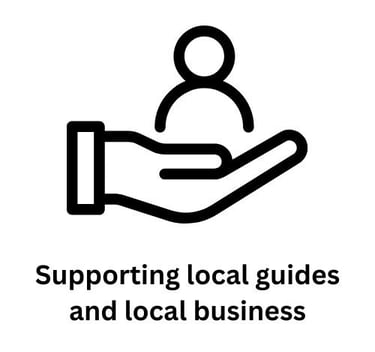IMPORTANT PRECAUTIONS FOR A SAFE TRIP IN PERU


Peru is a beautiful country with a rich history, diverse culture, and stunning landscapes that attract millions of visitors each year. However, like any popular destination, it's important to take necessary precautions to ensure a smooth and safe trip. Here’s a guide to help you navigate potential challenges while traveling in Peru.
1. Water Safety
In Peru, tap water is not safe to drink. Always opt for bottled water, and make sure the seal is intact when purchasing. In remote areas, it's a good idea to boil water before use to ensure safety. Even when brushing your teeth, it’s best to use bottled water to avoid any potential stomach issues.
2. Avoiding Food Poisoning
Peruvian cuisine is renowned for its variety and flavor, but it’s important to be cautious to avoid foodborne illnesses. Street food can be tempting, but choose vendors that appear clean and busy. Stick to freshly cooked meals and avoid raw seafood or undercooked meat, especially in rural or less touristy areas.
If you do experience symptoms of food poisoning, such as stomach cramps, nausea, or diarrhea, stay hydrated and seek medical attention if symptoms persist.
3. Staying safe in Lima
Lima, the capital, is a dynamic city with areas of both high and low security. While the neighborhoods of Miraflores, Barranco, and San Isidro are considered safe for tourists, other areas, especially around the bus terminals or outskirts, can be riskier. Avoid walking alone at night in poorly lit or unfamiliar areas, and opt for taxis or rideshare apps like Uber for added security.
Keep a close eye on your belongings, especially in busy tourist spots like Plaza de Armas and local markets, where pickpockets are common. Be wary of unsolicited offers for assistance, which can sometimes be scams.
4. Avoiding the North of Peru Due to High Crime Levels
While northern Peru boasts beautiful beaches and archaeological sites, it is important to exercise caution when traveling in this region due to higher crime rates. Areas such as Trujillo, Piura, and parts of the Amazon basin are known for having elevated levels of crime, including gang activity and robberies.
If you are considering visiting the north, always check the latest safety advisories from local authorities and your country’s embassy. It’s recommended to travel with a guided tour or trusted local guides to reduce risks. Stick to well-known tourist destinations and avoid traveling alone in more isolated areas.
5. Scams to Watch Out For
Scammers can be prevalent in tourist-heavy areas across Peru. Common scams include people pretending to be police officers asking for your passport or money for supposed "fines," or overly friendly strangers offering unsolicited help with directions, only to ask for tips later.
Always agree on prices upfront for taxis or private guides, and avoid accepting random offers of assistance from strangers. If you’re approached by someone in uniform, ask to see their badge and be cautious.
6. Avoiding Dirty Beaches
Many beaches along Peru’s coast, especially around Lima, suffer from pollution and can have poor water quality. While some more popular beaches like Punta Hermosa and Mancora offer cleaner waters, it’s wise to check water quality reports before deciding to swim.
If you’re set on enjoying the beach, ensure you choose areas known for their cleanliness and avoid swimming in areas with visible litter or stagnant water.
7. Animal Exploitation and Ethical Tourism
Sadly, animal exploitation is an issue in some tourist spots in Peru. You may come across animals like llamas, monkeys, or exotic birds being used for photos or performances, which often leads to animal mistreatment. For example, in certain areas, monkeys are caged and forced into close contact with tourists for photo opportunities, which is both unethical and harmful to the animals.
To avoid contributing to this exploitation, never participate in photo opportunities or performances that involve wild animals in captivity. Be sure to support ethical wildlife experiences, such as visiting accredited wildlife sanctuaries that prioritize animal welfare and conservation. When booking tours, research operators who respect wildlife and the environment.
Final Tips
Currency: Use secure ATMs located in well-populated or bank areas, and always keep your money and valuables in a safe place.
Altitude Sickness: High-altitude locations such as Cusco or Machu Picchu can cause altitude sickness. Drink plenty of water and take it easy during the first few days to adjust.
Travel Insurance: It’s advisable to have travel insurance that includes coverage for medical emergencies and theft.
By taking these simple precautions, you can make the most of your Peruvian adventure, focusing on its breathtaking sights, unique culture, and warm hospitality while keeping your safety and well-being a priority!




